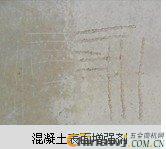**Inadequate Concrete Strength: Performance and Causes**
When concrete lacks sufficient strength, it can lead to a range of negative consequences. These include reduced impermeability, lower durability, and most importantly, compromised structural load-bearing capacity. The main performance issues are typically seen in three areas:
1. **Reduced Structural Strength**: This directly affects the overall integrity of the building or structure, making it less safe and more prone to failure.
2. **Poor Crack Resistance**: Insufficient strength often results in the formation of wide cracks, which not only look unattractive but also weaken the structure over time.
3. **Excessive Deformation**: Large deformations can occur, potentially affecting the normal use of the structure and even leading to safety hazards.
**Reasons for Inadequate Concrete Strength**
There are several factors that can contribute to weak concrete. These include poor-quality raw materials, improper mix design, and incorrect construction practices.
- **Poor Quality of Raw Materials**:
- **Cement**: If the cement has low activity or fails stability tests, it will not provide adequate strength.
- **Aggregates (Sand and Gravel)**: Low stone strength, unstable volume, poor shape, or high levels of impurities like dust, mica, or organic matter can all reduce concrete quality.
- **Water**: Poor water quality can interfere with the chemical reactions necessary for proper curing.
- **Admixtures**: Using substandard admixtures or incorrect proportions can also negatively impact the final strength.
- **Incorrect Mix Design**:
The mix ratio is one of the most critical elements in determining concrete strength. A high water-cement ratio, improper sand or aggregate ratios, or incorrect water content can all lead to weak concrete. Common issues include:
- Excessive water usage due to inaccurate measurement or failure to account for moisture in aggregates.
- Unauthorized changes to the mix ratio.
- Incorrect dosing of admixtures.
- Improper use of additives.
- Insufficient cement or aggregate quantity.
- **Faulty Construction Practices**:
- Poor mixing that leads to uneven distribution of materials.
- Loss of cement slurry during pouring, causing false or premature setting.
- Inadequate curing, such as early drying or freezing, which hinders the hardening process.
- **Improper Testing Procedures**:
If test specimens are not properly cured or prepared according to standards, the results may not accurately reflect the actual strength of the concrete.
**Remediation and Treatment**
To address insufficient concrete strength, several approaches can be taken:
- Conduct an accurate assessment of the actual strength using non-destructive testing methods.
- Consider using late-strength data if available.
- Reduce the structural load where possible.
- Reinforce the affected areas through additional support or strengthening techniques.
- Perform detailed analysis and calculations to determine the best course of action.
- In severe cases, demolition and reconstruction may be necessary.
By understanding the causes and taking corrective measures, the risks associated with weak concrete can be minimized, ensuring safer and more durable structures.


Smart Street Light,Smart Street Light Pole With Charge,Smart Street Light Pole,Street Lighting Pole With Camer
Yangzhou Langxu Lighting Technology Co., Ltd , https://www.street-lighting.com